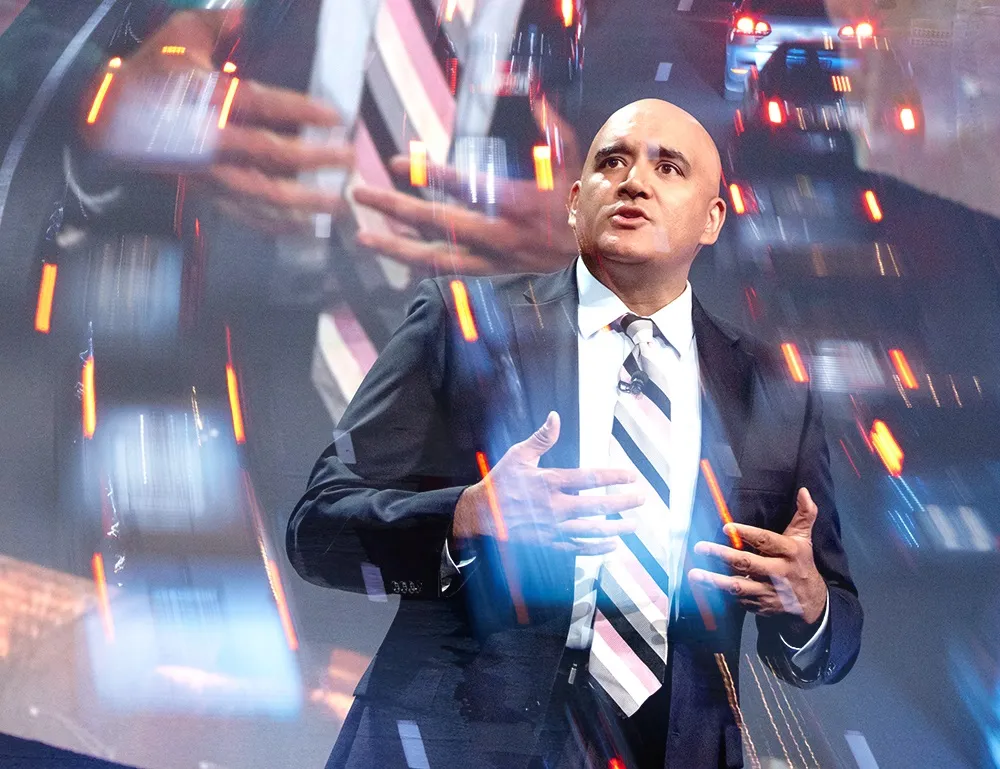
Less than five months ago, Regina Hopper took up the reins as President and Chief Executive Officer of ITS America at an important juncture in the future of the nation's transportation infrastructure. As she arrived in Bordeaux to fully participate in her first ITS World Congress, she explained her background and the challenges and opportunities facing this industry.
Q: You took the reins of ITS America in May. What should our global ITS World Congress attendees know about you?
I’m the proud daughter of a state highway commissioner. As a child, transportation was as likely a topic at the dinner table as what I learned in school that day. In my home state of Arkansas, there are two roads, one bridge, a tunnel and a park named after my father, Bobby Hopper. I grew up admiring his public service and knowing that his work was strengthening our community and our state and improving people’s lives. It makes me particularly proud to now represent intelligent transportation.
I’ve spent most of my career in Washington, DC. After serving as a White House correspondent for CBS News, I went on to represent leading U.S. industries —trucking, broadband and natural gas — during periods of profound, technology-fuelled transformation. It was great preparation for this opportunity.
The founders of
Q: What is the vision for ITS America going forward?
That’s the all-important question before our members right now as we undergo a strategic planning process. We certainly have our priority issues, including pressing for long-term funding to update the nation’s transportation infrastructure and safeguarding wireless spectrum dedicated to advancing intelligent transportation.
But more broadly, we also recognise that our members now all do their work in a ‘new normal’ of rapid transformation. Innovation and disruption is occurring quickly and continually, and government policy is lagging behind. We are fortunate to represent the full gamut of people and organisations working on these issues — public officials, established industry players, new tech disruptors and leading research institutions. We believe this puts ITS America in a strong position to be the trusted voice and credible forum to work through complex challenges, so we can unlock, accelerate and maximise the full potential of these technologies.
Q: So what’s your plan for your first ITS World Congress?
Meet as many people as possible. See and learn as much as possible. I want to explore all of the innovation on display here. I love sharing what I learn through social and digital media — Facebook, Twitter, Instagram, you name it. Look for the hashtag #THISisITS. The goal of this social media campaign is to connect the dots for the public and help bring about an understanding of the broad scope of promise and potential encompassed by the term ‘intelligent transportation.’
As we understand in the industry, the connected car is but just one element of ITS. From dynamic traffic signs and big data applications, to revolutionising public transportation and freight, to imagining and pursuing a world with zero traffic fatalities — our member companies are leading nothing short of a revolution in our modern way of life. We want to expose the public to all of its facets, get them excited about what’s coming and vocal in their support of seeing this progress arrive in their lives.
We’ll be using the #THISisITS hashtag as we make the rounds on the exhibit floor and various discussions. If you’re active in social media, please join the conversation.
Q: Where do things stand in the US with regard to V2V, V2I and V2X technology?
We are moving from research and development to deployment. Just this summer two exciting initiatives were announced; the first is in Ann Arbor, where the Michigan Mobility Transformation Center opened MCity, a first-of-its-kind off roadway environment complete with roads, roundabouts and remote-controlled pedestrians built to test autonomous and connected vehicles. The second is GoMentum Station in Concord, California, where the Contra Costa Transportation Authority is leading a public-private partnership aimed at testing and commercialisation of Connected Vehicle applications. The 5,000–acre former navy base, featuring 20 miles of paved roadway, is the largest secure test facility in the world.
And, just last month, the US Department of Transportation selected New York City, Tampa, Florida as well as the rural state of Wyoming to receive up to $42 million as part of US DOT’s Connected Vehicle Pilot deployment program. The announcement was another milestone in the race toward the future of how we move in America, from our rural communities to our biggest cities, and a show of support for promising new technologies that will help to revolutionise mobility as we know it.
Regina Hopper is a veteran executive of major Washington industry associations. Her experience in public policy advocacy, communications, media and law spans the transportation, telecommunications and energy industries. Before joining ITS America, she served as president and CEO of America’s Natural Gas Alliance where she built operations from the ground up in Washington and in 22 states. She also served as executive vice president of US Telecom and the American Trucking Associations where she oversaw internal operations, connected advocacy to non-dues revenue generation, and managed external policy advocacy and communications.
Prior to her trade association work, Regina was a correspondent for CBS News where she earned an Emmy for investigative reporting on 48 Hours. She covered the George H.W. Bush and Clinton White Houses as well as breaking news for CBS network news programs and CBS Newpath.










